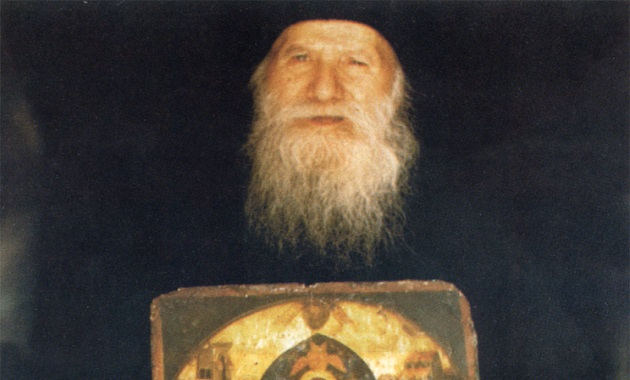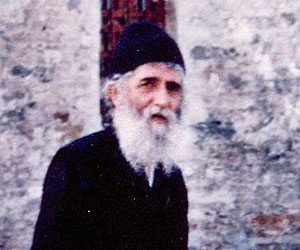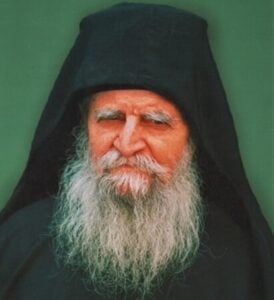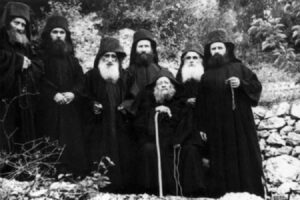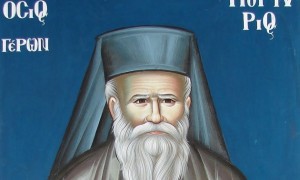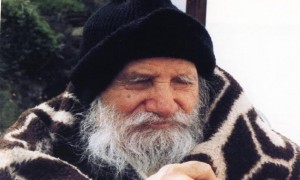Saint Porphyrios Kavsokalyvitis (Part III)
3 December 2022[Previous post: https://bit.ly/3Ejldgk]
d) Immortality
The victory over death, the sense and assurance of immortality is an experience that is common to all the saints and Elder Porphyrios himself. In the recorded interview mentioned above he also says: ‘The man who belongs to Christ should love Christ, and when he loves Christ he will be freed from the devil, from Hell and from death’. These are not the words of someone who has thought of this truth himself. They are words drawn from real personal experience and therefore possess the value of an eye witness’s testimony. It makes no difference that Elder Porphyrios, out of humility and a profound sense of human weakness, tells us that he has not yet reached that state.
Rather, it makes him more credible, for he is no longer seen as someone who thinks he has got somewhere. ‘I haven’t reached that state, but that’s what I seek, that’s what I want. Both in my quiet times and wherever I am I try to live in that state, but I don’t… I do try, however. In other words…how can I put it? How can I put it? I haven’t been somewhere, you know… or rather I did go there once and saw what it was like, and now I am no longer there, but I remember it, I long for it, I want to be there. Yes, now, this very moment, tomorrow, the day after, at every moment I feel the desire to be there. I want to go there, I ask for this to be granted to me. But I am not there… No, but I’m living in this struggle to get there…’.
St. Gregory of Nyssa assures us that ‘to find God is to seek Him endlessly’. There is no better or more reliable confirmation of the fact that Elder Porphyrios found God, and that the path of love that he shows us is the quickest, safest and best way for God to find us as well and to joyfully and lovingly pick each one of us up like a lost sheep and lead us from this life into His earthly uncreated Church, which is a place of love, joy, peace and immortality.
May this be so, Lord, through the prayers of Your servant Porphyrios. Amen.
On November 27, 2013, Ecumenical Patriarchate of Constantinople approved the proposal for entering the hieromonk Porphyrios Kafsokalyvitis in the registry of the Saints of the Orthodox Church.
St Porphyrios’ Quotes:
‘And I always pray that my spiritual children will love God – which is everything – so that He may deem us worthy to enter His uncreated Church here on earth. For it is here that we must begin. I have always tried to pray and to read the hymns of the Church, Holy Scripture and the lives of our saints, and I pray that you will do the same. I have tried to draw near to God through God’s Grace and I pray that you will do the same.’
‘Wherever we find Christ, even if it is a cave, we stay there and are afraid to leave in case we lose Christ’.
‘He who has given his heart to Christ will not suffer, however many difficulties he experiences. He is glad, he is full of inner joy. He is dynamic. He is careful. He does not make mistakes or cause harm. His mind, his hands and his feet are all propelled by God’s Grace. How could he possibly be stupid?’
‘Well, that is indeed how we should view Christ. He is our friend, He is our brother, He is whatever is beautiful and good. He is everything. But most of all He is our friend and He cries out: “Look here, you are my friends, can’t you understand that? We are brothers… Look, I’m not… I’m not brandishing Hell as a weapon, I don’t want to scare you, I love you. I want you to enjoy life with me”.’
‘We should take care to devote ourselves to Christ and to become saints, to enter His Church and then, once all inside His Church, to become one body. That is, all of us who are Orthodox Christians. And when we achieve this, for those of us who manage to enter the Church, there will be no more death, Hell or Satan…’.
‘And afterwards? Nothing else. And when my life ends like this, full of joy, may I be given just a few branches once more to make my last resting-place.’
A Note for Kafsokalyvia:
‘Kafsokalyvia is a very simple community of ascetics, situated in a place where the torrents of Athos are channelled into a broad rocky and resonant ravine. The forty or so kalyves encircle the Kyriakon like a chain. The kalyves are separated from each other by rings of green, which consist of a small garden, a minute vineyard, and a few citrus trees, which, together with the few olives and other fruit-bearing trees, provide the only consolation for the ascetics, who break their backs to dig amongst the rocks and fill the cavities with earth brought from the surrounding area, despite the low fertility of the dry soil thereabout.’
E. Kourilas, Istoria Askitismou (A History of Asceticism), 1929, p. 35.

